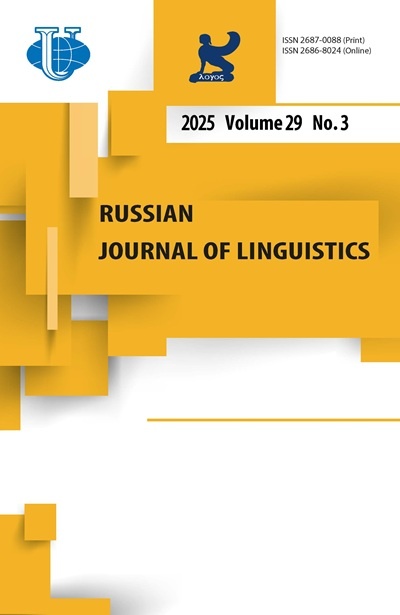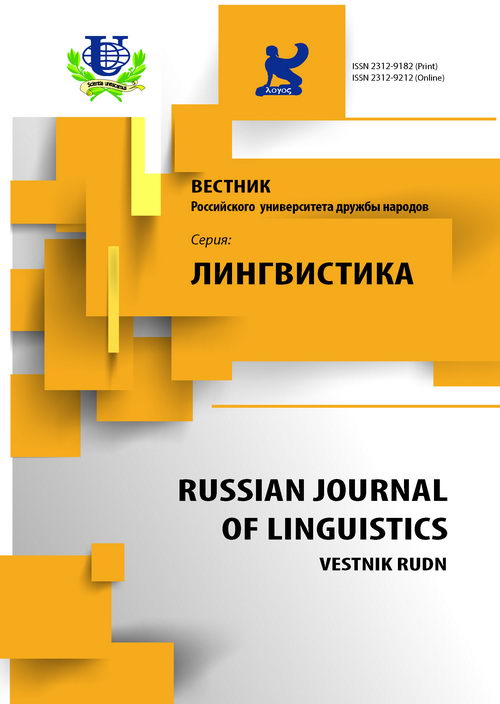Communicative-Pragmatic Organization of Scientific Technical Text
- Authors: Popova TG1, Rudneva MA1
-
Affiliations:
- Peoples’ Friendship University of Russia
- Issue: No 2 (2015)
- Pages: 104-112
- Section: Articles
- URL: https://journals.rudn.ru/linguistics/article/view/9352
- ID: 9352
Cite item
Full Text
Abstract
Scientific texts constitute different speech entities from the perspective of communicative and pragmatic structures. These structures are formed by text components such as communicative and pragmatic components and pragmatic settings. Topics, descriptions of research results, findings and conclusions are outlined as communicative-pragmatic blocks. The typical means of expressing communicative pragmatic blocks are certain clichéd constructions that are characterized by special speech means in the speech text plane. The scientific text also includes such pragmatic setups as prognostic, compensating, evaluative, non-verbal means of exposure which materialize in specific speech means on the textual plane, the so-called pragmatic actualizers, understood as a system of multi-level linguistic units incorporated on the basis of their impact functions. All this allows us to consider the communicative-pragmatic structure of scientific texts as multi-dimensional and comprehensive.
About the authors
T G Popova
Peoples’ Friendship University of Russia
Email: taisapo@mail.ru
Department of Foreign Languages Engineering Faculty
M A Rudneva
Peoples’ Friendship University of Russia
Email: maria_rudneva@list.ru
Department of Foreign Languages Engineering Faculty
References
- Баженова Е.А. Научный текст в аспекте политекстуальности. Пермь: Изд-во Пермского ун-та, 2001.
- Крижановская Е.М. О стереотипности компонентов коммуникативно-прагматической структуры научного текста // Стереотипность и творчество в тексте. Пермь: Пермский ун-т, 1999. С. 77-84.
- Попова Т.Г. Испанский научно-технический текст: традиции и современные подходы к изучению. М.: Изд-во РУДН, 2003.
- Попова Т.Г., Руднева М.А. Научно-технический текст в современном ракурсе. Германия: Palmarium Academic Publishing, 2014.
- Рябцева Н.К. Теоретическое и лексикографическое описание научного изложения: межъязыковой аспект. Науч. доклад докт. филол. наук. М., 1996.
- Mutt, Mari José A. Manual de redacción científica, 2002 (disponible en http://www.caribjsci.org/ epub1).
- Romero Gómez Nicolás Modelo numérico para diseño o revisión de sistemas agrícolas con riego en déficit y se aplicación a épocas de sequía. Tesis para obtener el grado de Doctor en Ingeniería (hidráulica) UNAM, 2001.
Supplementary files















